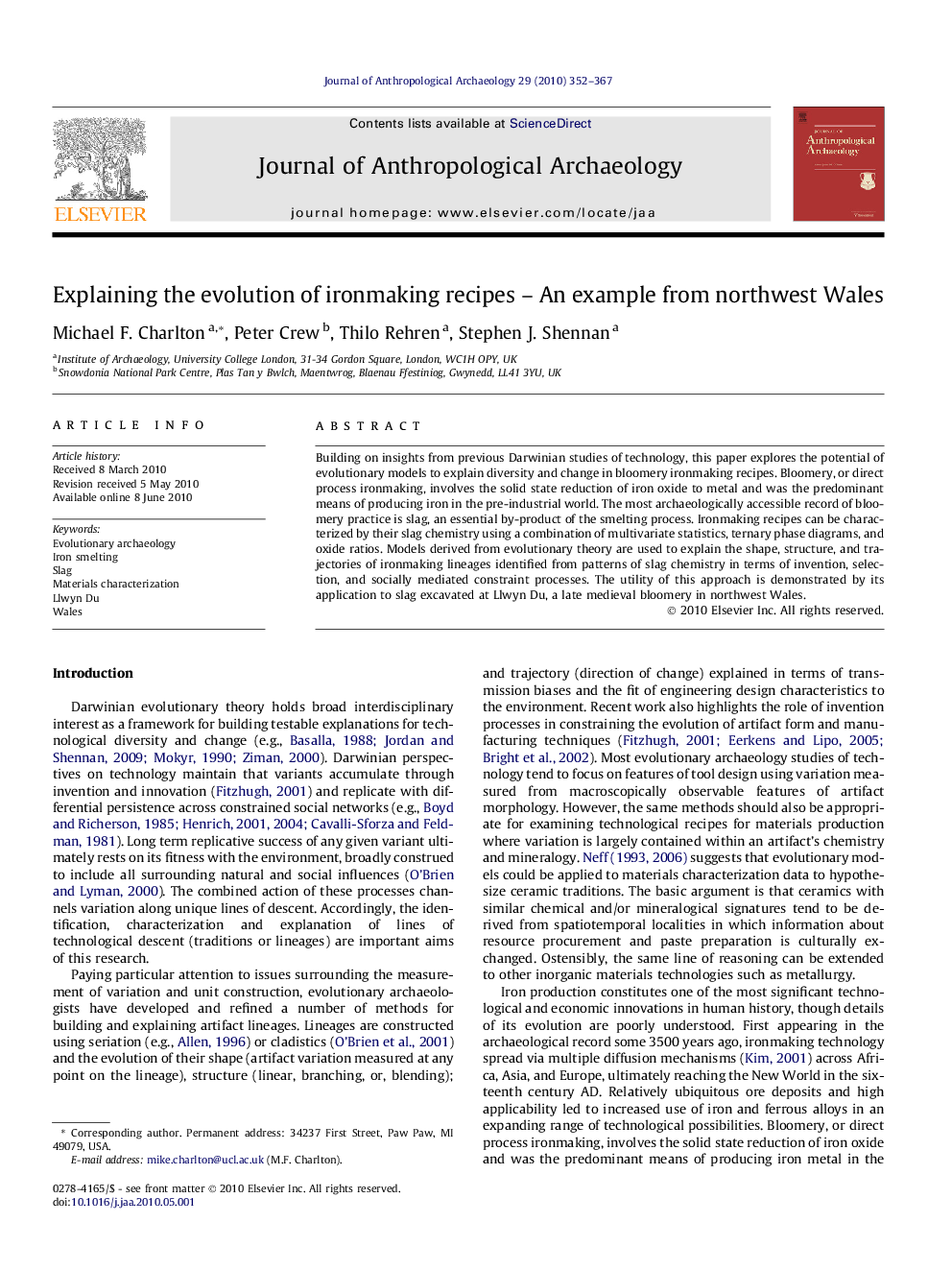| Article ID | Journal | Published Year | Pages | File Type |
|---|---|---|---|---|
| 1035024 | Journal of Anthropological Archaeology | 2010 | 16 Pages |
Building on insights from previous Darwinian studies of technology, this paper explores the potential of evolutionary models to explain diversity and change in bloomery ironmaking recipes. Bloomery, or direct process ironmaking, involves the solid state reduction of iron oxide to metal and was the predominant means of producing iron in the pre-industrial world. The most archaeologically accessible record of bloomery practice is slag, an essential by-product of the smelting process. Ironmaking recipes can be characterized by their slag chemistry using a combination of multivariate statistics, ternary phase diagrams, and oxide ratios. Models derived from evolutionary theory are used to explain the shape, structure, and trajectories of ironmaking lineages identified from patterns of slag chemistry in terms of invention, selection, and socially mediated constraint processes. The utility of this approach is demonstrated by its application to slag excavated at Llwyn Du, a late medieval bloomery in northwest Wales.
